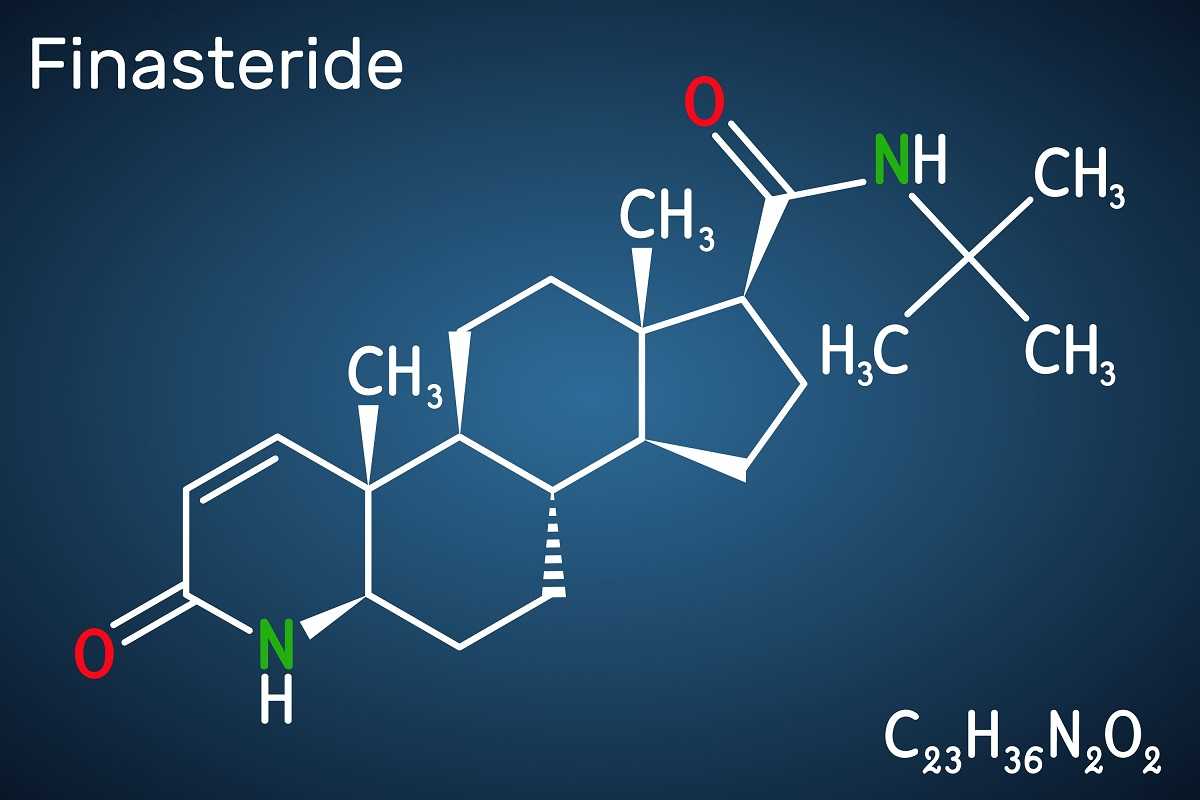Finasteride is a medication that is commonly used to treat hair loss and benign prostatic hyperplasia (BPH). It belongs to a class of drugs called 5-alpha reductase inhibitors, which work by blocking the enzyme 5-alpha reductase. This enzyme is responsible for converting testosterone to dihydrotestosterone (DHT), a hormone that plays a role in hair loss and BPH.
Finasteride is usually considered as an option by doctors when a patient is experiencing symptoms related to hair loss or BPH. In the case of hair loss, finasteride is typically recommended for men with male pattern baldness, a common type of hair loss that is caused by genetics and hormones. Finasteride can be effective in stopping hair loss and even promoting new hair growth in some cases.
In the case of BPH, finasteride is usually recommended for men who have moderate to severe symptoms, such as frequent urination, weak urine flow, and difficulty urinating. Finasteride can help to improve symptoms by reducing the size of the prostate gland and improving urine flow.
Before prescribing finasteride, a doctor will typically conduct a thorough evaluation to determine if the medication is appropriate for the patient. This may include a physical exam, laboratory tests, and a discussion of the patient’s medical history and symptoms. The doctor will also consider any potential risks or side effects of finasteride, as well as any other medications the patient is taking.
It is important to note that finasteride is not appropriate for everyone. The medication is not recommended for women, as it can cause birth defects if a woman becomes pregnant while taking it. Finasteride is also not recommended for men who are allergic to the medication or have certain medical conditions, such as prostate cancer or liver disease.
There is evidence to suggest that finasteride can impact testosterone levels. In some studies, men who took finasteride for hair loss or BPH experienced a decrease in testosterone levels. For example, a study published in the Journal of Clinical Endocrinology and Metabolism found that men who took finasteride for BPH had an average decrease in testosterone levels of approximately 17% (Studd et al., 2002). However, it is important to note that the magnitude of this decrease is small and does not typically result in clinically significant symptoms of low testosterone.
The link between finasteride and testosterone levels is complex and not fully understood. While finasteride may decrease testosterone levels, it is not clear whether this is a direct effect of the drug or due to the reduction in DHT levels. Some research suggests that the decrease in testosterone may be due to the suppression of DHT, as DHT has been shown to stimulate testosterone production (Zitzmann et al., 2001). However, other studies have found that finasteride has no effect on testosterone levels (Rolf et al., 2004). More research is needed to fully understand the relationship between finasteride and testosterone.
There are possible side effects of finasteride on testosterone levels. Some men who take finasteride may experience a decrease in testosterone levels, which can result in symptoms such as decreased libido, erectile dysfunction, and fatigue (Rolf et al., 2004). However, these side effects are rare and typically resolve when the drug is discontinued (Studd et al., 2002).
Post-finasteride syndrome is a rare condition that can occur in some men who have taken finasteride. Symptoms of post-finasteride syndrome can include sexual dysfunction, depression, and cognitive impairment (Saket et al., 2014). There is no known cure for post-finasteride syndrome, and treatment is typically focused on managing symptoms.
There are alternatives to finasteride for managing testosterone levels. These may include other 5-alpha reductase inhibitors, such as dutasteride, as well as testosterone replacement therapy. The choice of treatment will depend on the individual’s symptoms and underlying cause of low testosterone.
It is important to consult with a healthcare provider to determine if finasteride is the right choice for managing testosterone levels. The decision to use finasteride should be based on a thorough evaluation of the potential benefits and risks, as well as the individual’s specific needs and medical history.
Low testosterone treatment can involve a variety of approaches, depending on the underlying cause and severity of the condition. Options may include lifestyle changes, such as weight loss and exercise, as well as medications and hormone replacement therapy. If you already tried to use food to help and increase your testosterone levels, but it did not give you the results you wanted, it is important to work with a healthcare provider to determine the best course of treatment for your low testosterone.
We recommend studying online TRT therapy.
In conclusion, finasteride is a medication that is commonly used to treat hair loss and BPH. While there is evidence to suggest that it can impact testosterone levels, the magnitude of this decrease is small and does not typically result in clinically significant symptoms. The link between finasteride and testosterone levels is complex and not fully understood, and it requires more research.
If you want to learn more about hormonal treatment options or you have any additional questions about this topic, contact HRT Doctors Group today! Our team specializes in hormonal therapies and can help you find the right solution for your needs. We will do our best to answer your questions and help you find your way to hormone balance and well-being.
